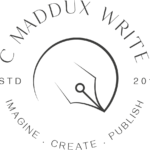Are you looking to become a skilled fiction writer but aren’t sure where to begin? Learning to write fiction is no easy task, but it should be fun! Using your imagination to create an engaging story is an immeasurable joy that can easily become an unconquerable challenge.
To become a proficient fiction writer it’s imperative that you find your writing style and the genre of fiction that works best for you. Here are some tips to help you find your voice and hone your storytelling craft.
1. Know Your Writing Style: Narrative Writing
There are several different kinds of writing styles and they all serve different purposes but for fictional writing, you’ll likely want to stick to the style of narrative writing. Narrative writing is the writing style typically used in the various formats of plot-driven creative writing such as novels, plays, scripts, or screenplay.
Characteristics of a narrative include a plot with a beginning, middle, and end, characters to create action within the plot, and the setting or various settings that the story takes place in.
Narratives often employ familiar tropes to teach lessons and create a connection with audiences. Almost every fictional book, movie, and television series that exists is an example of a narrative story. Once you’ve nailed the traits of the narrative writing style it’s time to hone in on your own specific voice and writing style as an author or writer.
2. Read Well-known Authors From Different Genres Of Fiction
Reading and consuming narrative content as a writer of narrative fiction is extremely important! This allows you to understand how different kinds of stories are crafted and the different moods and tonalities applied to different genres. A genre is a type of narrative that adheres to a specific set of attributes and usually has a specific tone and aesthetic, for example, some narrative fiction genres include science fiction, romance, fantasy, horror, mystery, and many more.
All of these genres are at any writer’s disposal when crafting a work of narrative fiction and they can help set the guidelines for the plot, setting, and even characters. You can of course read informational articles such as this one or take creative writing classes, but the best way to pick up on the nuance of fiction storytelling is by reading masters of the art form.
Looking for a good place to start? I’d suggest Stephen King for horror, Gillian Flynn for thrillers, and F. Scott Fitzgerald if you’re interested in classic literature!
3. Compare The Writing Styles You Observe In Different Genres Of Fiction
Once you’ve begun to intentionally consume fictional narratives you’ll begin to notice through lines and similarities in stories of the same genre. You’ll also begin to notice the ways in which narrative stories are written differently depending on the genre/s they adhere to most.
There is a wide variety of writing styles to choose from, but only one voice that is truly your own, so even if you become enamored with a certain style try not to copy someone else’s voice. Always stick to what makes you you, in regard to your writing style, but have fun creating your own style by learning and observing what is and isn’t effective for other writers.
The efficacy of different prose styles is easiest to observe when your taking in the content of others and comparing what you liked and didn’t like about one work or another. Take note of what moved you versus what left you disinterested, and what flowed versus what felt choppy or ill-timed.
4. Develop Your Own Writing Style That Fits Your Genre or Genres Of Choice
Once you’ve observed and compared different styles of narrative writing, as well as the ways in which different genres of fiction are written, you can begin to truly develop your own personal style.
Hopefully by this time you’re keyed in to what genres personally interest you and what kind of stories you would prefer to tell and why. It may also be useful to have a few personal favorite authors, novelists, etc. whose writing style you particularly enjoy, even better if they write in the same preferred genre as yourself.
This is because you can find the commonality between these artists and see what draws you to them, helping you to pinpoint what you most fervently want to explore in your own fiction writing.
Once you’ve decided what you’re writing about and why you’re moved to write about it, it’s all about creating your own voice and doing this while establishing the setting, characters, and plot.
Remember, your voice should be true to you and also fit the tone and mood of the genre or genres you’re writing.
5. Make Sure Your Writing Style Matches The Mood And Tone Of Your Narrative
What exactly am I referring to when I say the mood or tone? The term ‘’mood” in regard to literature most often refers to the atmosphere of a narrative which is created by the narrative’s setting, the character’s attitudes, and the verbiage used in description passages relayed by the writer.
When the term “tone” is used in the context of narrative writing it typically refers to what’s considered a literary device. The literary device of tone is the means through which an author projects their own personal attitude of the work onto the narrative. The tone may also reflect the attitudes or feelings of the characters within the narrative or the narrative itself.
The employment of tone allows for a richer and more complex understanding of a narrative and in many cases indicates what an author’s intentions were when writing a particular narrative.
Mood and tone should both be appropriately utilized in almost every narrative fiction in order to communicate more than just exposition and plot details to the readers, but also more nuanced aspects of the story like a character’s frame of mind or emotional state, or even an authors feelings about the actions or behavior of a troubled character.
6. Stay Focused – Try Not To Get Lost In Ideas Or Overcome By Writer’s Block
It’s probably easy for every writer to relate to either getting overwhelmed by the number of ideas you have or experiencing crippling writer’s block. Everyone’s been there! A great remedy for this is to stay focused and keep your eyes on the prize.
Not every idea needs to go into one narrative, start small and work your way through a plot that seems graspable, achievable, and exciting. Creating aides like outlines and visual mood boards for your narrative can be useful tools for staying on task and keeping creative juices flowing.
Playlists with music that help set the mood can also be helpful when world-building and trying to stay on task. Finding an ideal workspace that’s comfortable and conducive to focusing may also play a supporting role in a writer’s ability to stay on task and create a high volume of content.
Once you’ve applied any or all of these tips in a way that works for you it should become more or less a habit to equal parts dream and stay focused when writing. Once that’s possible, concentrating on the most concise version of your narrative and not losing the plot becomes more second nature than a constant struggle.
7. Only Share The Relevant Information To The Narrative At Hand
At this point, you probably have an idea of not only what you want to write your narrative about and why, but also how you want to write it. The only step left is to roll your sleeves up and get to work!
Remember to consider the tone and mood of your narrative, and its genre as you write. Consider ways to engage audiences while remaining true to the heart of your story when creating your settings, plot, and characters.
Characters especially should be compelling and someone readers emotionally align with regardless of whether a character is an antagonist or a protagonist or something in between. Always avoid creating shallow characters.
Once all of these aspects have come into play in your narrative, you must consider just how much detail you want to share. Try not to over saturate an audience with information by remembering an important factor in writing narrative fiction – don’t give away too much.
When crafting your narrative be sure to include only the details that enhance the story you’re currently writing or details that relate to the plot in some way that will have relevance later.
Knowing how to use details to build tension or expand the plot instead of bore readers is imperative when writing narrative fiction.
Be sure to check out any of my many services on the site, including consultations, editing, ghostwriting, and more!






